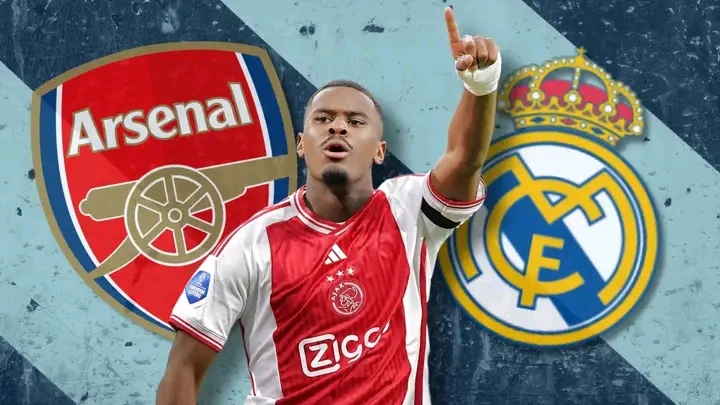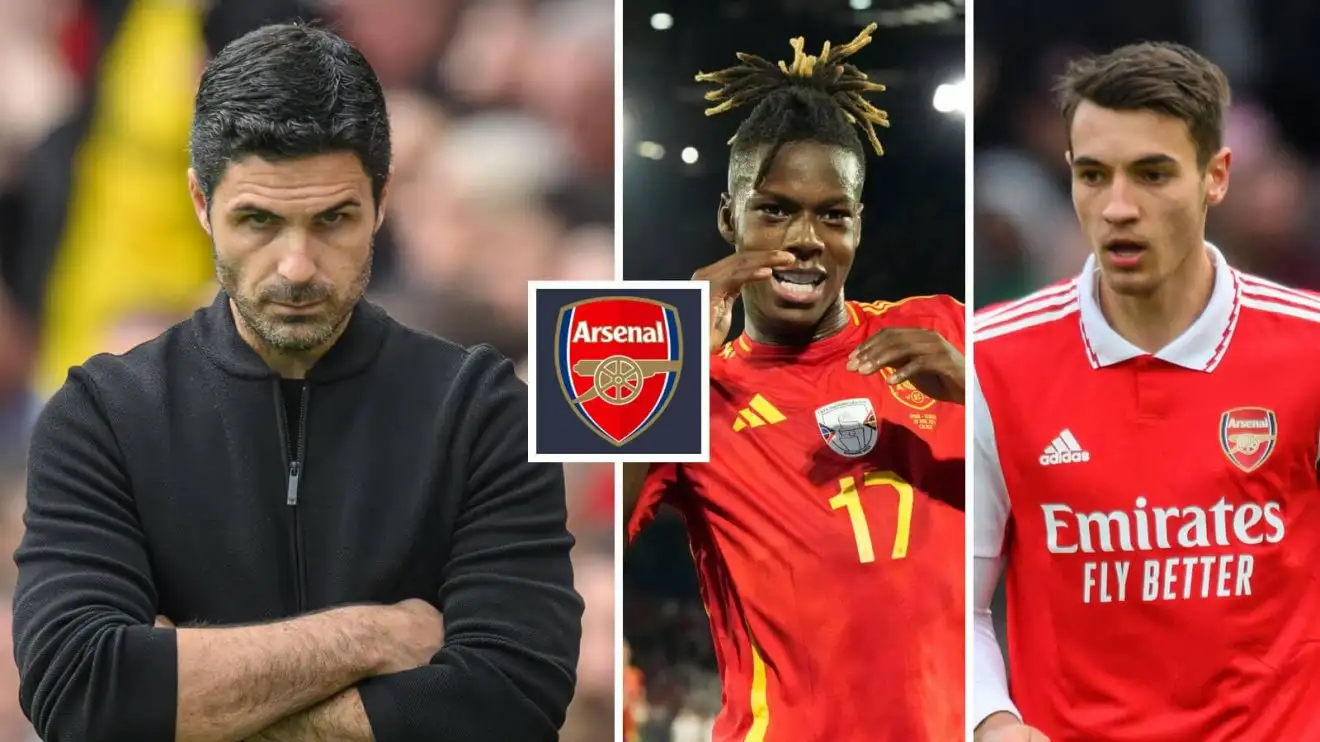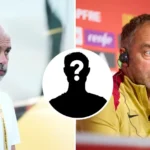Liverpool’s Missed Opportunity: The Jorrel Hato Transfer Saga

The summer transfer window of 2025 has been a period of significant activity for Premier League clubs, with Chelsea once again making headlines for their extravagant spending spree. Among their high-profile acquisitions was Dutch defender Jorrel Hato, a versatile 19-year-old talent who joined the Blues from Ajax Amsterdam for a reported fee of $46 million. What makes this transfer particularly intriguing from a Liverpool perspective is the revelation that the Reds were once considered the frontrunners for Hato’s signature, only to see the deal slip away due to differing opinions within the club’s hierarchy
Liverpool’s interest in Jorrel Hato was not entirely surprising given the strong Dutch influence within Arne Slot’s squad and coaching setup. The connection between the Netherlands and Liverpool has grown increasingly significant since Slot’s appointment as manager, with the former Feyenoord boss bringing his tactical philosophy and keen eye for Dutch talent to Merseyside. Virgil van Dijk, Liverpool’s talismanic captain and defensive leader, had reportedly become a vocal advocate for bringing his young compatriot to Anfield.
Van Dijk’s endorsement of Hato carried considerable weight within Liverpool’s decision-making circles. As one of the world’s premier center-backs and a player with intimate knowledge of the Dutch football system, his opinions on potential signings are highly valued by the club’s recruitment team. The Liverpool captain had apparently been effusive in his praise of Hato, recognizing the teenager’s exceptional potential and versatility that could serve the Reds well across multiple positions.
The young defender’s ability to operate effectively at both center-back and left-back made him an attractive proposition for Liverpool, especially considering the club’s need for defensive depth and flexibility. Hato’s emergence through Ajax’s renowned youth academy system had caught the attention of Europe’s elite clubs, with his performances in the Eredivisie and European competitions showcasing a maturity beyond his years.
Despite van Dijk’s enthusiastic endorsement, manager Arne Slot harbored reservations about pursuing Hato as a primary target. This divergence of opinion between the club captain and the manager created an interesting dynamic within Liverpool’s transfer planning. Slot’s concerns were not necessarily about Hato’s ability or potential, but rather about whether the young defender represented the best fit for Liverpool’s immediate tactical needs and long-term strategic vision.
The manager’s hesitation appeared to stem from his detailed analysis of what Liverpool required in their defensive positions. While acknowledging Hato’s undeniable talent, Slot seemed to favor a different profile of player for the left-back position specifically. His preference ultimately led Liverpool to pivot toward alternative targets, with Hungarian international Milos Kerkez emerging as the manager’s preferred choice for the left-back role.
Slot’s decision-making process reflected his meticulous approach to squad building, where every signing must align perfectly with his tactical system and the specific requirements he has identified for each position. The manager’s experience in Dutch football meant he was well-acquainted with Hato’s abilities, making his reservations all the more significant in the context of Liverpool’s transfer strategy.
Liverpool’s eventual pursuit of Milos Kerkez instead of Hato represented a clear indication of Slot’s influence on the club’s transfer policy. The Hungarian left-back, who had impressed with his performances for both club and country, offered a different set of attributes that more closely aligned with what Slot envisioned for his Liverpool team. Kerkez’s pace, attacking thrust, and defensive solidity made him an attractive proposition for a Liverpool side looking to maintain their high-intensity, attacking style of play.
The choice between Hato and Kerkez highlighted the complex nature of modern football recruitment, where multiple factors beyond pure talent must be considered. Age, adaptability, tactical fit, and long-term potential all play crucial roles in determining which players clubs ultimately pursue. In this instance, Slot’s assessment was that Kerkez represented a better immediate solution to Liverpool’s needs, despite Hato’s obvious potential and the strong recommendation from van Dijk.
Kerkez’s profile as a more attack-minded full-back suited Liverpool’s system, where the wide defenders are expected to provide significant attacking contribution while maintaining defensive stability. His experience in top-level European football, combined with his age and room for development, made him an appealing target for a club looking to balance immediate impact with future potential.
While Liverpool deliberated over their defensive targets, Chelsea moved decisively to secure Hato’s services. The Blues’ approach to the transfer market under their current ownership has been characterized by ambitious spending and a willingness to acquire young talent with high potential, regardless of immediate squad needs. Hato’s signing represented another significant investment in their long-term future, adding to an already extensive collection of promising young players.
Chelsea’s ability to offer Hato a seven-year contract demonstrated their commitment to building around young talent while also providing the financial security that often proves decisive in modern transfer negotiations. The length of the contract offered both the player and the club significant benefits, with Hato securing his long-term future while Chelsea protected their investment in a player they believe will develop into a world-class defender.
The Blues’ recruitment strategy has focused heavily on acquiring players before they reach their peak market value, with Hato fitting perfectly into this model. At just 19 years old, with over 100 appearances for Ajax already under his belt, he represented exactly the type of signing that Chelsea’s data-driven approach to recruitment had identified as offering exceptional value and potential return on investment.
The revelation that Hato had been spotted at Anfield earlier in 2025 added another layer of intrigue to the transfer saga. His presence at Liverpool’s stadium suggested that serious discussions had taken place between the player’s representatives and the club, indicating that a move to Merseyside was indeed a realistic possibility at one stage.
The young defender’s visit to Anfield would have given him firsthand experience of Liverpool’s matchday atmosphere and the opportunity to envision himself playing in the famous red shirt. For many players, such visits can be decisive moments in their decision-making process, providing emotional context to complement the professional and financial considerations that dominate modern transfers.
Had Hato joined Liverpool, he would have benefited from working alongside van Dijk and other experienced defenders in the squad. The presence of Dutch internationals within the team would have eased his transition to English football, providing both linguistic and cultural support during his adaptation period. The opportunity to learn from van Dijk, in particular, could have accelerated his development significantly
Liverpool’s approach to the Hato situation reflected broader themes in their transfer strategy under Slot’s management. The emphasis on finding players who fit specific tactical requirements, rather than simply acquiring the most talented individuals available, demonstrated a mature and considered approach to squad building. This methodology had served Liverpool well in previous transfer windows, where they had often succeeded in identifying players who exceeded expectations due to their perfect fit within the team’s system.
The decision to prioritize Slot’s tactical preferences over van Dijk’s player recommendations, while potentially controversial, showed the club’s commitment to backing their manager’s vision. This approach required delicate handling to ensure that senior players like van Dijk remained fully engaged with the club’s direction while respecting the manager’s authority over team selection and tactical setup.
Liverpool’s transfer strategy has traditionally focused on identifying players who can make an immediate impact while also offering long-term value. The Hato situation presented a classic dilemma between these two objectives, with the young defender representing enormous long-term potential but perhaps not offering the immediate tactical fit that Slot required for his system
Hato’s departure from Ajax represented another significant loss for the Amsterdam club, which has seen many of its brightest talents move to Europe’s major leagues in recent years. The Dutch giants have built their business model around developing young players and selling them to larger clubs, but the loss of players like Hato inevitably impacts their competitive strength in both domestic and European competitions.
The young defender’s journey from Ajax’s youth academy to Chelsea’s first team squad exemplified the modern pathway for Dutch football talent. Ajax’s reputation for developing technically gifted, tactically intelligent players continues to attract attention from Europe’s elite clubs, with Hato representing the latest in a long line of successful graduates from their system.
His over 100 appearances for Ajax since breaking into the first team during the 2022-23 season demonstrated remarkable consistency and development for such a young player. This experience at the highest level of Dutch football, combined with exposure to Champions League and Europa League competition, provided him with a solid foundation for making the step up to the Premier League.
Chelsea’s $46 million investment in Hato pushed their summer spending well beyond the $300 million mark, continuing their strategy of significant financial outlay in pursuit of long-term success. This level of expenditure reflects the current market reality for young players with exceptional potential, where clubs must pay premium prices to secure the services of the most promising talents.
For Liverpool, the decision not to pursue Hato at this price point may have reflected their more cautious approach to transfer spending, particularly for players who might not provide immediate first-team impact. The club’s recent history of successful recruitment has often involved identifying players before they reach peak market value, allowing them to secure quality additions without breaking their wage structure or financial sustainability model.
The contrast between Chelsea’s willingness to spend significant sums on potential and Liverpool’s more measured approach highlighted different philosophies toward squad building. While both methods can be successful, they require different levels of financial commitment and risk tolerance from the respective ownership groups.
The Hato transfer saga provides valuable insights into the complex dynamics of modern football recruitment. The situation demonstrated how differing opinions within a club’s hierarchy can influence transfer outcomes, and how managers’ tactical preferences often take precedence over individual player recommendations, regardless of their source.
For Liverpool, the decision may ultimately be judged on how well Kerkez performs in comparison to Hato’s development at Chelsea. If the Hungarian defender proves to be the perfect fit for Slot’s system while Hato struggles to adapt to Premier League football, the manager’s judgment will be vindicated. Conversely, if Hato develops into a world-class defender while Kerkez fails to meet expectations, questions may be raised about the decision-making process.
The situation also highlighted the importance of having clear lines of authority in transfer decisions. While senior players’ opinions are valuable, the ultimate responsibility for team composition must rest with the manager, who is accountable for the team’s tactical setup and performance on the pitch.
The Jorrel Hato transfer saga represents a fascinating case study in modern football recruitment, where talent identification, tactical fit, financial considerations, and internal politics all play crucial roles in determining outcomes. Liverpool’s decision to pursue Milos Kerkez instead of the Dutch defender, despite strong advocacy from Virgil van Dijk, demonstrated Arne Slot’s growing influence over the club’s transfer strategy and his commitment to building a squad that perfectly fits his tactical vision.
While Chelsea ultimately secured Hato’s services with their characteristic financial firepower, the long-term success of this transfer will depend on how well the young defender adapts to the demands of Premier League football and whether he can fulfill the enormous potential that made him such a sought-after target.
For Liverpool, the situation serves as a reminder that even the most promising transfer opportunities must be evaluated through the lens of tactical suitability and squad balance. The club’s willingness to walk away from a deal that didn’t meet their specific requirements, despite the player’s undeniable talent and strong internal advocacy, reflects a mature and disciplined approach to recruitment that has served them well in recent years.
As both Hato and Kerkez begin their respective journeys with their new clubs, the football world will be watching with interest to see which recruitment decision proves more successful in the long term. The outcome may well influence how clubs balance tactical requirements against pure talent when making future transfer decisions, making this saga a potentially significant moment in the evolution of football recruitment strategies.















